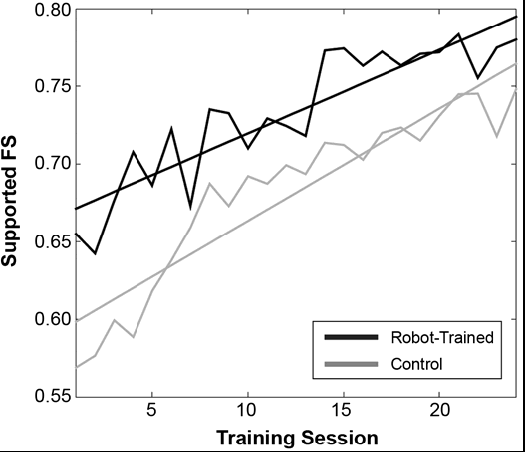|
     
Among the clinical finding involving hundreds of
stroke patients:
 | Robotic-assisted therapy is proven safe and effective.
 | Patients recover more than twice as rapidly as those not receiving robotic
therapy.
 | Improvements are long-lasting, and are enjoyed by patients who are months,
and even years, post-stroke.
 | Fewer side effects, such as joint pain, are reported compared to
traditional therapy patients. [2] |
| | |

Comparison of supported fraction of speed (FS)
for robot-trained group and control group, which trained without robot
assistance. FS is speed during fast-as-possible reaching along Assisted
Rehabilitation and Measurement Guide by hemiparetic arm, divided by speed of
contralateral arm, with device oriented horizontally. [8]
Key features of robotic therapy that may lead to improved
rehabiliation time:
 | Intensive repetitions of therapeutic movement;
 | Engaging and adaptive video games that progress in step with the patient;
 | Automated patient-specific and clinic-wide record keeping;
 | Reduced wear and tear on clinicians, who can focus more on the plan
of care
| | | |
 
|
